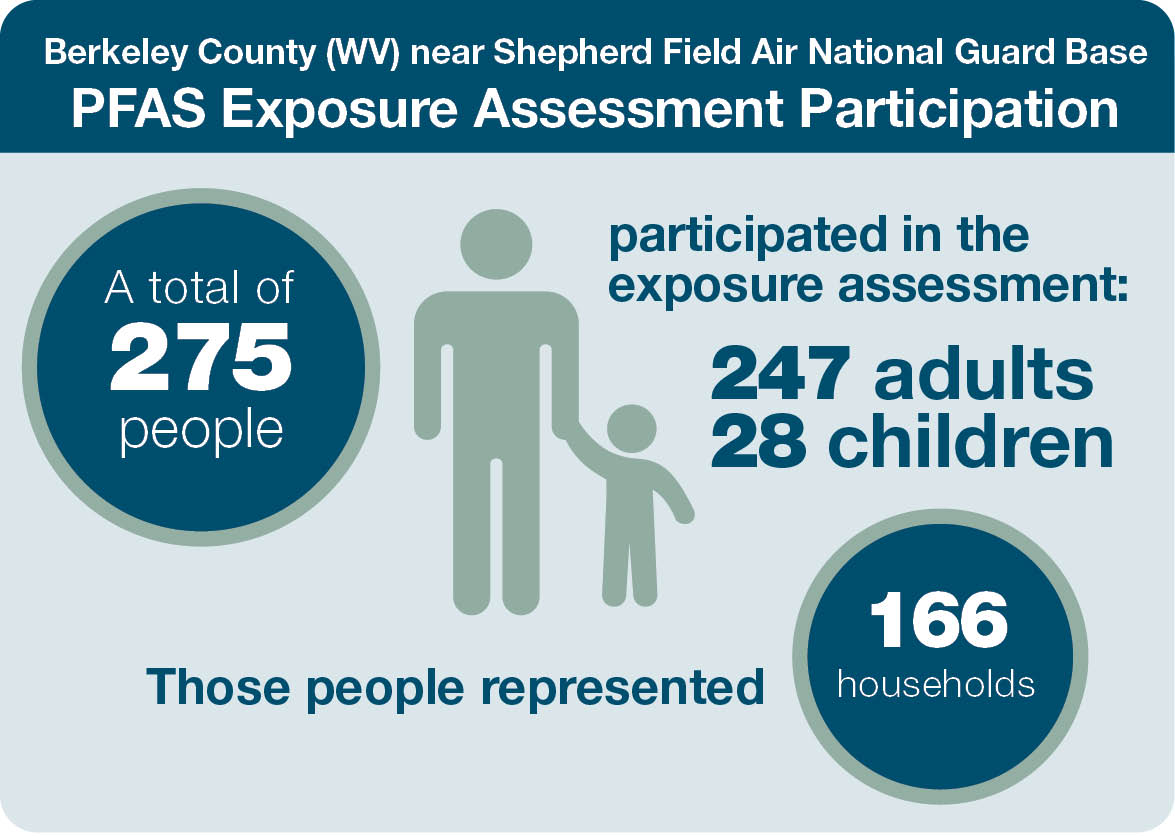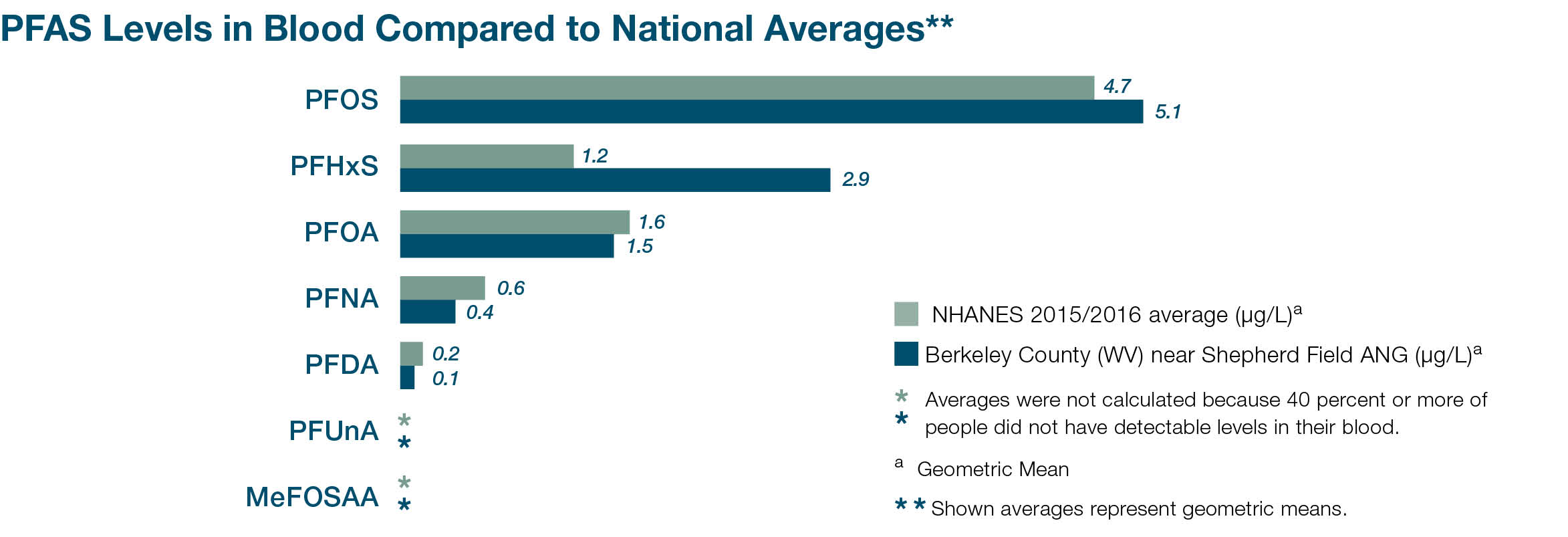At a glance
In 2019, the Centers for Disease Control and Prevention (CDC) and the Agency for Toxic Substances and Disease Registry (ATSDR) started exposure assessments (EAs) in communities near current or former military bases known to have had per- and polyfluoroalkyl substances (PFAS) in their drinking water.

Information to protect our communities

Individuals who participated in the EAs provided blood and urine samples to CDC/ATSDR for analysis. We sent letters to participants with their individual lab results. See the sample letter of the test results.
Additional information is also being reviewed to better understand the community's exposure. This includes age and location. Once our full analysis is complete, CDC/ATSDR will host an in-person community meeting to share our findings and recommendations.
The Berkeley County, WV site focused on an area near the Shepherd Field Air National Guard Base (ANG).
PFAS levels in blood
Did you know...
Since 1999, the National Health and Nutrition Examination Survey (NHANES) has measured PFAS levels in blood in the U.S. population. Most people in the United States have been exposed to PFAS and have PFAS in their blood.
The lab tested participants' blood for seven different PFAS. PFAS levels are measured in micrograms per liter (µg /L).
CDC/ATSDR compared the levels of PFAS in participant's blood across the community to the levels found in the U.S. population. Two PFAS (PFOS and PFHxS) were detected above national averages. The levels of PFOA, MeFOSAA, PFUnA, PFNA, and PFDA were similar or below national averages.


PFAS levels in blood compared to other studies**



Other PFAS levels
Urine
All participants provided a urine sample; some of the samples were analyzed. Only one PFAS (PFBA) was detected at very low concentrations in 67% of the samples collected. This level falls just above the non-detect level.
Tap water
CDC/ATSDR collected and tested tap water samples from 19 participating households. PFAS levels for all 19 tap water samples were below all federal and applicable state guidelines for PFAS in drinking water.
Local authorities in Martinsburg have taken action to reduce levels of PFAS in drinking water. Based on the information ATSDR has reviewed, the public drinking water supplies in and near Martinsburg currently meet all federal guidelines for PFAS. ATSDR does not recommend community members use alternative sources of water.
Dust
CDC/ATSDR collected and tested dust samples from 19 participating households. CDC/ATSDR is evaluating the dust sample results and will have more information in the final report.
About the results
For more information
Visit www.atsdr.cdc.gov/pfas
Contact Regional Representative
215-814-3139
CDC/ATSDR is evaluating data collected from the PFAS EA to better understand exposure in the community. This measures PFAS levels in people's bodies but is unable to identify health effects associated with these levels of exposure. We are working to better understand health effects from PFAS exposure through the Multi-site Health Study.
We are also reaching out to doctors, nurses, and other health care providers in the El Paso County, CO area to provide PFAS information.
- https://www.tandfoline.com/doi/pdf/10.1080/15426110308984859?needAccess=true
- https://health.pa.gov/topics/Documents/Environmental%20Health/PEATT%20Pilot%20Project%20Final%20Report%20April%2029%202019.pdf
- https://www.atsdr.cdc.gov/HAC/pha/Decatur/Perflurochemical_serum%20Sampling.pdf
- https://ehp.niehs.nih.gov/doi/pdf/10.1289/ehp.0800379
- https://dhhs.nh.gov/dphs/documents/pease-pfc-blood-testing.pdf
- https://www.health.ny.gov/environmental/investigations/drinkingwaterresponse/docs/westhampton_quogue_group_level_blood_testing
- https://www.cdc.gov/exposurereport/pdf/FourthReport_UpdatedTables_Volume1_Jan2019-508.pdf

